Chateau Narbonnais in Toulouse was the medieval, fortified palace of the counts of Toulouse, and most of my latest novel, Love’s Knife, is set there, in 1093. The remains of the palace, beneath the contemporary Palais de Justice, were explored in recent archaeological digs (Institute National de Recherces Archéologiques Préventives, 2016). Most of the surviving ruins date from the major rebuilding of the palace effected by Count Raymond V around 1160 when the palace was moved slightly and expanded (Catalo, 2007, 2019; Catalo & Cazes, 2010; Prin & Rochacher, 1991).
However, my novel is set earlier, so I needed to know what the palace was like before the renovations. Unfortunately, almost nothing is known about the appearance of the chateau before the major transformations that look place in the second half of the 12th century. However, designers Studio Différemment have constructed images of what it might have looked like.
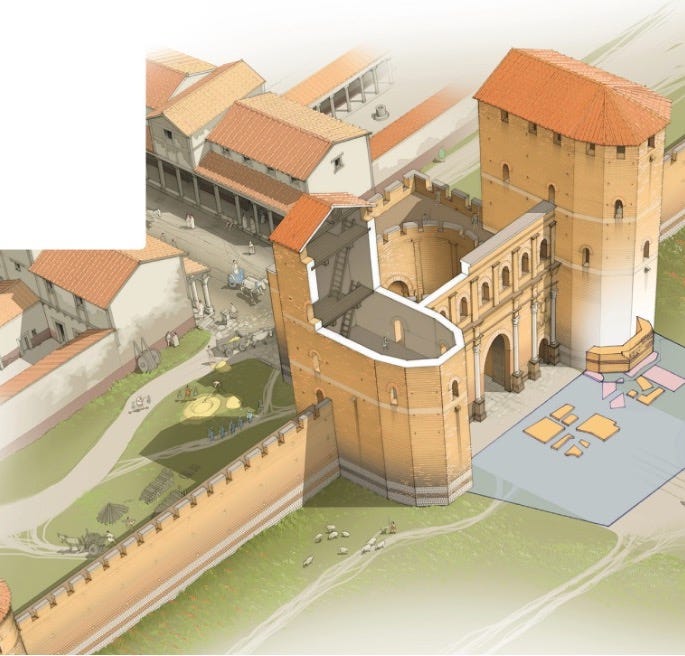
Roman armies built their first fort at what they called Tolosa in 118 BC. Tolosa became a flourishing Roman city under Julius Caeser in 52 BC. By 418 it was the capital of the Visigoth kingdom which extended into Spain. From 507, the Visigoths were displaced in Toulouse by Frankish rulers, including Charlemagne.
Studio Différemment’s speculative idea of the original medieval palace suggests it was built around the Roman Narbonnaise Gate in the city’s southern Roman walls. It would have been a massive red clay brick, stone and rubble building with two reinforced, buttressed towers on either side of a triple arched entryway. The high central arch was wide enough for carts and horses and the two lower, narrower arches on either side were for pedestrians. The arched gateways let into a circular courtyard where entrants to the city could be taxed before they were allowed to continue on along the Roman road, the Cardo Maximus (present-day Rue Saint Rome and Rue des Changes), which runs to the site of the forum (the present-day Capitole).
After the fall of Rome and then the Visigoths, Toulouse, with its Roman walls and the Chateau Narbonnais gateway fort, was subjected to a series of attacks during the early medieval period. The Duke of Aquitaine defeated an invading Muslim army at Toulouse in 721.
A 20-metre-wide ditch was dug in front of the gate and palace in the 9th century and a semi-circular palisade ditch was dug right against the building. The Frankish king Charles the Bald attacked Toulouse in 844 (Nelson, 1992). In 844, Charles besieged Toulouse, setting up court at Saint-Sernin, which was then outside the Roman city walls. Charles issued at least 20 charters from Saint-Sernin in May and June that year. Count Bernard, the ruler of Toulouse, had rebelled against Charles and had been accused of having an affair with Charles’ mother Empress Judith. He was executed by Charles. Bernard’s wife Dhuoda wrote the moving Handbook for William (1991) for her son, which reflects the fraught times for her husband and her palpable anxieties for her son. As soon as Charles’ forces left, a Viking warband sailed up the Garonne and attacked Toulouse.
Bernard and Dhuoda’s son William had been disinherited by King Charles and he joined forces with Charles’ enemy Pippin II and inflicted a serious defeat upon Charles in June 849. Charles attacked Toulouse again in September 849 and burnt the Narbonnais gate and chateau. By 1093, the temporal setting for my novel, it is a reasonable guess that my characters were living in a restored version of the Roman fortified structure around the gate.
The medieval seals and arms of the city of Toulouse also give a range of depictions of Chateau Narbonnais (although these all date after the mid-12th century renovations).

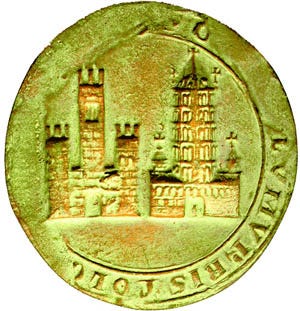
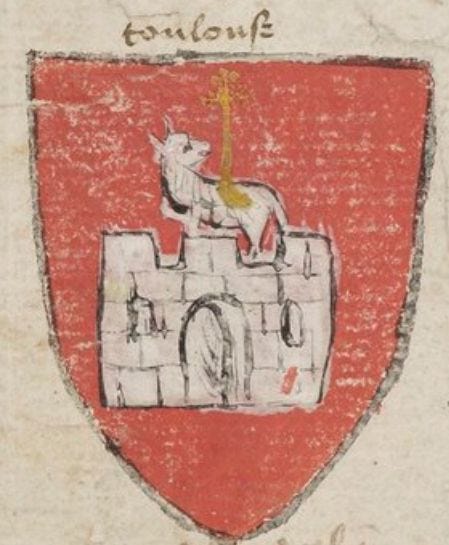
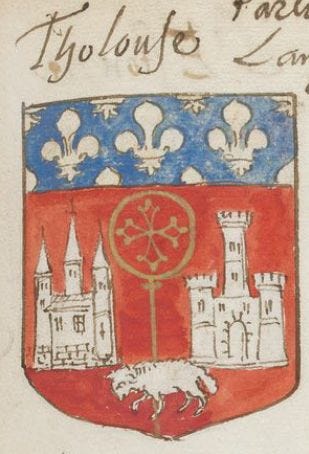
An illustration in the Annales of the Toulouse capitouls from 1516-1517 shows Chateau Narbonnais in the background of the bottom image.
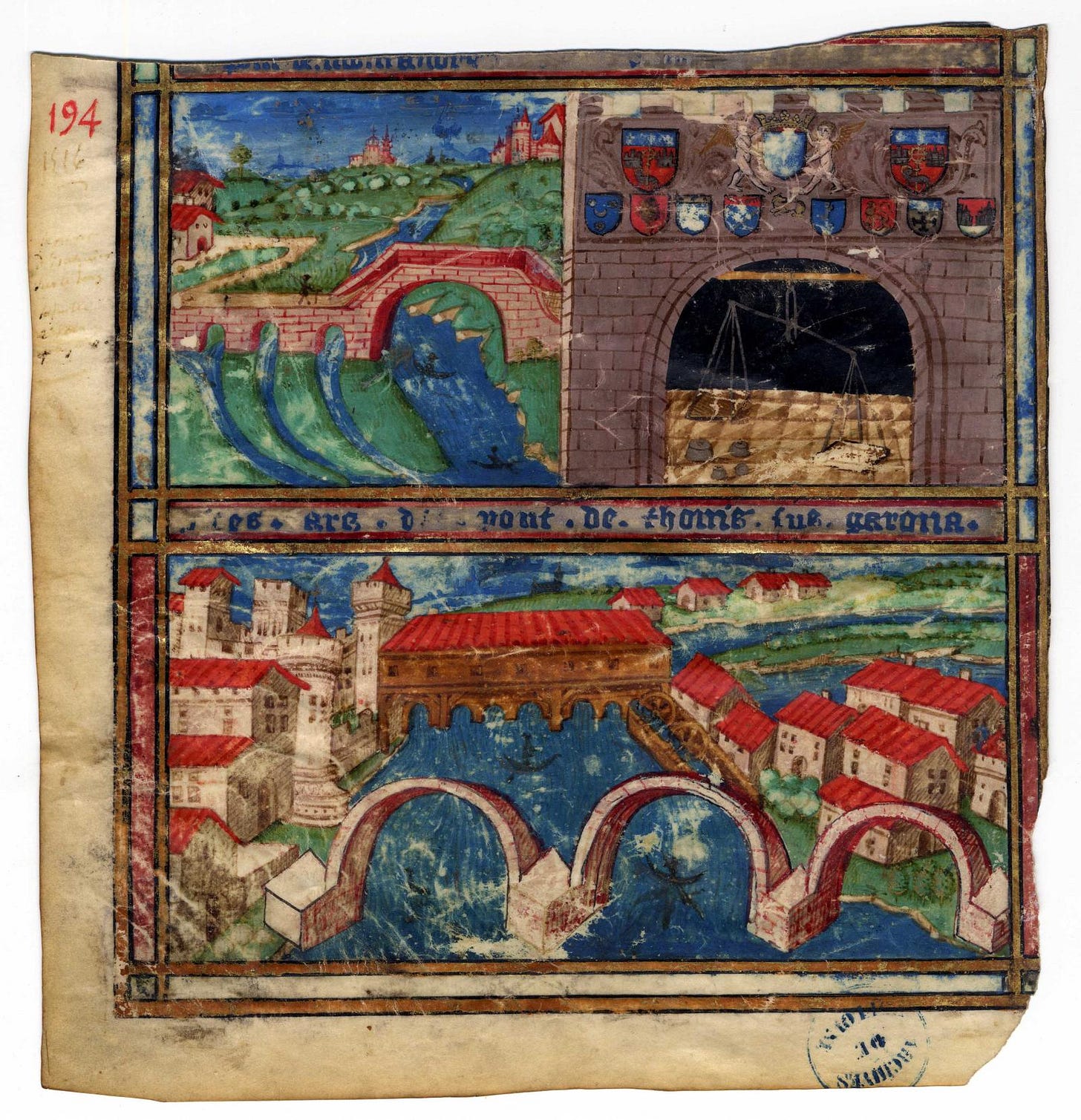
This image of Toulouse, including Chateau Narbonnais, from 1515, is also much later than the 1093 setting of my novel, but I include it here because it delightfully demonstrates the significance of the river, Roman walls, bridges and buildings of the city!
Finding out about the early history of Toulouse and looking at Studio Différemment’s speculative reconstruction of the early medieval palace (Studio Différemment, 2016; n.d.) has allowed me to tweak my descriptions in the novel, but also to use the probable layout of the structure and the city imaginatively in my scenes. Working with maps and plans in writing fiction often inspires me. See my earlier post, ‘Into the Map’, https://traceywarr.substack.com/p/into-the-map.
Love’s Knife is being serialised on Substack, with a chapter every Saturday for paying subscribers. The book will be published in early September 2024.
Sources
Archives de Toulouse (n.d.) Annales Manuscrite de la ville de Toulouse 1516–1517, BB273. https://www.archives.toulouse.fr/nous-connaitre/arcanes-la-lettre-d-informations-des-archives/les-archives-d-arcanes/dans-ma-rue?p_p_auth=D6jNqCMb&p_p_id=49&p_p_lifecycle=1&p_p_state=normal&p_p_mode=view&_49_struts_action=%2Fmy_sites%2Fview&_49_groupId=10184&_49_privateLayout=false
Catalo, Jean (2007) Pérennité des lieux de pouvoir: Le château Narbonnais de Toulouse, porte monumentale antique transformée en forteresse, Archéopages, 19, August.
Catalo, Jean (2019) La tour de l’horloge du parlement de Toulouse. In M. Vivas (ed.), (Re)lecture archéologique de la justice en Europe médiévale et moderne (1–). Pessac: Ausonius Éditions. https://doi.org/10.4000/books.ausonius.18248
Catalo, Jean & Cazes, Quitterie (2010) Toulouse au Moyen Age: 1,000 Ans D’Histoire Urbaine, Portet-sur-Garonne: Loubatières.
Dhuoda (1991) Handbook for William: A Carolingian Woman’s Counsel for her Son, trans. by Carol Neel, Washington, D.C.: The Catholic University of America Press. Written 841–843.
Institute National de Recherches Archéologiques Préventives (2016) La Redecouverte du Chateau Narbonnais a Toulouse. https://www.inrap.fr/la-redecouverte-du-chateau-narbonnais-toulouse-11887
Languedoc (n.d.) Languedoc Seals. https://www.midi-france.info/191600_seals.htm
Mundy, John Hine (1954) Liberty and Political Power in Toulouse 1050–1230, New York: Columbia University Press.
Nelson, Janet L. (1992) Charles the Bald, London: Routledge.
Prin, Maurice & Rocacher, Jean (1991) Le Parlement et le Palais de Justice de Toulouse, Toulouse: Privat.
Le Studio Différemment (2016) De la Porte au Château, Patrimoine, Feb-Mar, pp. 60–63. http://www.studiodifferemment.com/telechargement/PDF/toulouseb42portenarbonnaise.pdf
Le Studio Différemment (n.d.) Le Histoire en Image. http://www.studiodifferemment.com




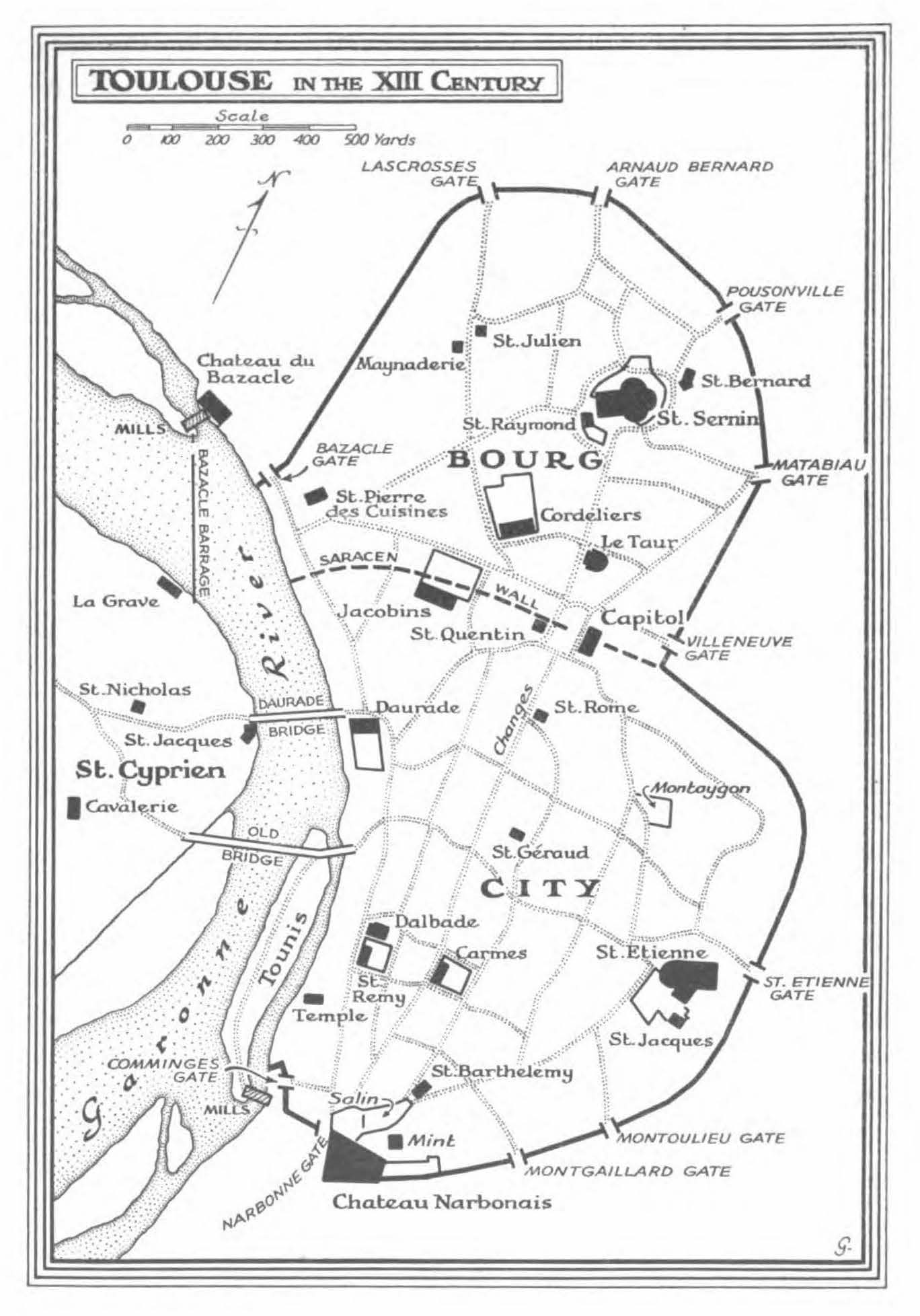
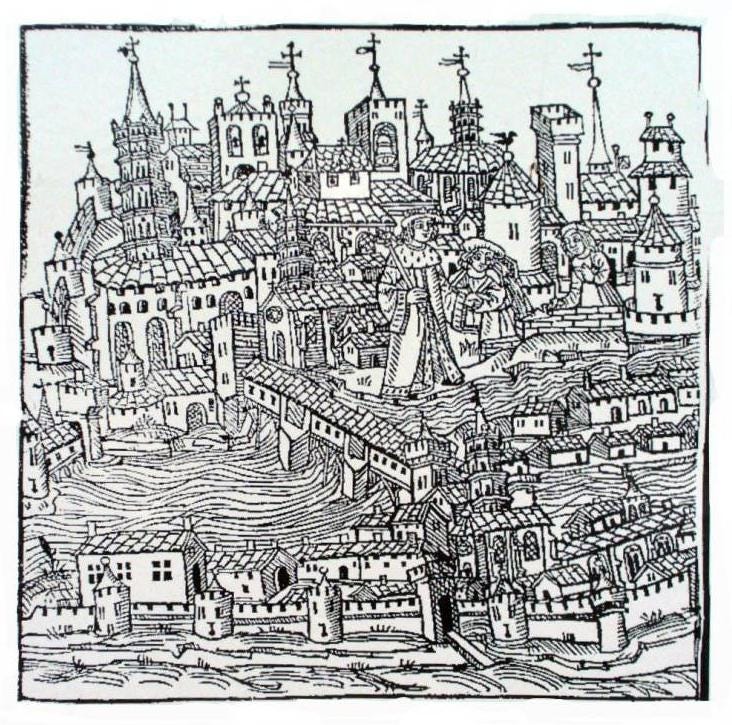
Wonderful detail!